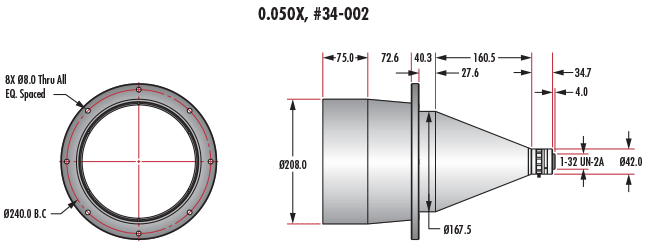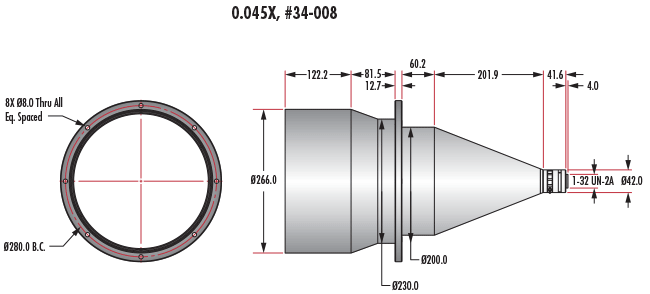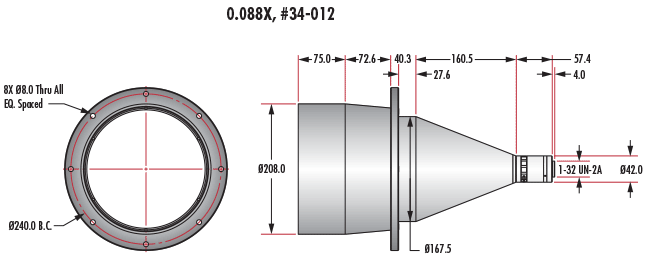
 TECHSPEC® 부품은 에드몬드 옵틱스가 설계, 사양 지정 및 제조하는 제품입니다. 더 알아보기
TECHSPEC® 부품은 에드몬드 옵틱스가 설계, 사양 지정 및 제조하는 제품입니다. 더 알아보기
TECHSPEC® TitanTL® Telecentric Lenses는 넓은 FOV(field of view)가 요구되는 머신 비전 시스템과 계측 용도에 적합하도록 설계되었습니다. 이 렌즈는 최대치의 대형 센서 포맷, 다양한 작동 거리(WD) 및 배율 옵션, 그리고 필터를 쉽게 결합할 수 있도록 해주는 렌즈 뒤 쪽의 필터 홀더를 특징으로 합니다. 당사의 118mm, 182mm, 242mm FOV 버전에 있는 내장형 mounting flange는 마운트를 추가 하지 않아도 각각의 렌즈를 간편하게 고정시키며, 위치 설정이 쉽도록 기준면을 제공합니다. TECHSPEC® TitanTL® Telecentric Lenses는 카메라 센서의 위치 변화를 조절해주는 끼움쇠와 조절 가능한 조리개, 그리고 카메라로 간단하게 회전 정렬시키기 위한 3 set screw lens 마운트를 포함합니다. 일반적인 용도로는 자동차와 전자 장비 검사, 측정 및 계측이 있습니다.
이 렌즈는 2017 Innovators Award에서 은상을 수상한 경력이 있습니다.
참고: 각각의 렌즈에는 상세 검사 보고서가 함께 포함됩니다.
















본사 및 지사별 연락처 확인하기
견적 요청 도구
재고 번호 입력 필요
Copyright 2023, 에드몬드옵틱스코리아 사업자 등록번호: 110-81-74657 | 대표이사: 앙텍하우 | 통신판매업 신고번호: 제 2022-서울마포-0965호, 서울특별시 마포구 월드컵북로 21, 7층 (서교동, 풍성빌딩)
The FUTURE Depends On Optics®